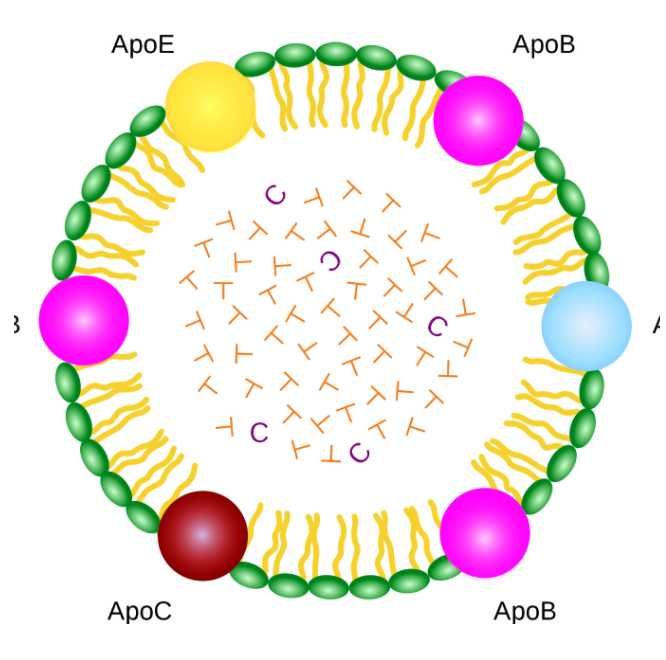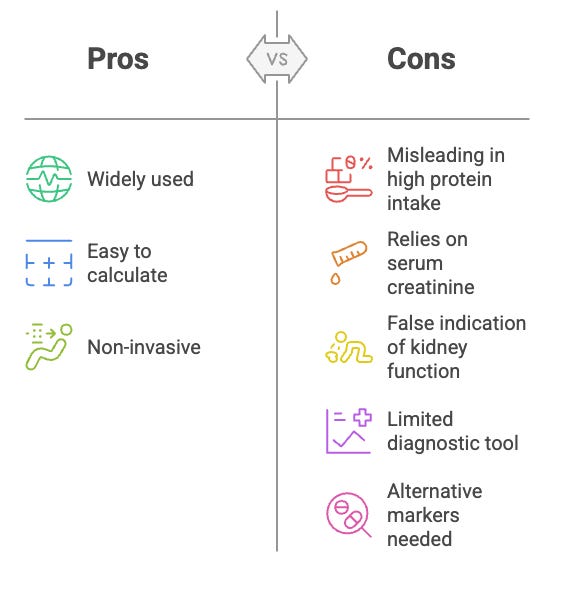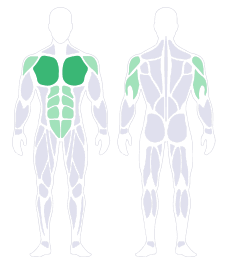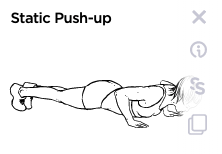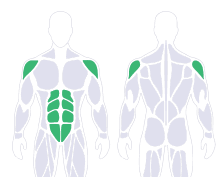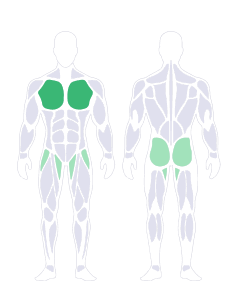Is there such a thing as 'bad cholesterol?' The British Medical Journal casts doubt on the cholesterol hypothesises. https://bmjopen.bmj.com/content/6/6/e010401
Here are a couple of quotes from very large sample size studies.
Conclusions: High LDL-C is inversely associated with mortality in most people over 60 years. This finding is inconsistent with the cholesterol hypothesis (ie, that cholesterol, particularly LDL-C, is inherently atherogenic). Since elderly people with high LDL-C live as long or longer than those with low LDL-C, our analysis provides reason to question the validity of the cholesterol hypothesis.
"Doubt cast on wisdom of targeting ‘bad’ cholesterol to curb heart disease risk"
From Science Daily
Setting targets for 'bad' (LDL) cholesterol levels to ward off heart disease and death in those at risk might seem intuitive, but decades of research have failed to show any consistent benefit for this approach, reveals an analysis of the available data.
https://www.sciencedaily.com/releases/2020/08/200803184143.htm
Over 1 million people studied
A comprehensive new study on cholesterol, based on results from more than a million patients, could help upend decades of government advice about diet, nutrition, health, prevention, and medication. Just don't hold your breath.
The study, published in the Expert Review of Clinical Pharmacology, centers on statins, a class of drugs used to lower levels of LDL-C, the so-called "bad" cholesterol, in the human body. According to the study, statins are pointless for most people.
"No evidence exists to prove that having high levels of bad cholesterol causes heart disease, leading physicians have claimed" in the study, reports the Daily Mail. The Express likewise says the new study finds "no evidence that high levels of 'bad' cholesterol cause heart disease."
The study also reports that
heart attack patients were shown to have lower than normal cholesterol levels of LDL-C and that older people with higher levels of bad cholesterol tend to live longer than those with lower levels.
See the background to why the recommendations for lowering saturated fat was based on misrepresentation of data
This excellent video explains the history behind the 'low-fat' diet recommendations.
The downside to medical studies that are published.
When a new drug gets tested, the results of the trials should be published for the rest of the medical world -- except much of the time, negative or inconclusive findings go unreported, leaving doctors and researchers in the dark. In this impassioned talk, Ben Goldacre explains why these unreported instances of negative data are especially misleading and dangerous.
Low Carb and LDL (with a bit about statins)
Dr Paul Mason obtained his medical degree with honours from the University of Sydney, and also holds degrees in Physiotherapy and Occupational Health. He is a Specialist Sports Medicine and Exercise Physician.
These are the notes from my recent Muscle and Health meeting regarding LDL, HDL and Triglycerides.
Firstly I wish to cover the basics and then talk about transport of fats and lipids around the body.
Triglycerides are the 'storage form' of fat-based fuel.
Triglycerides are found in fat cells (adipocytes) and inside lipoproteins.
To move triglycerides around the body for usage you need to break them into their component parts.
Look at the word triglyceride and it is made of two parts.
'Tri' means three, relating to the 3 fatty acids and the 'glyceride' relates to a glycerol backbone. To break them up you need the lipase enzyme. You then get...
1 Glycerol (3 carbon chain, soluble in bloodstream, commonly used by liver to generate glucose.)
3 free fatty acids (carried by albumin in bloodstream, small so can slip through membranes)
This goes back and forth.
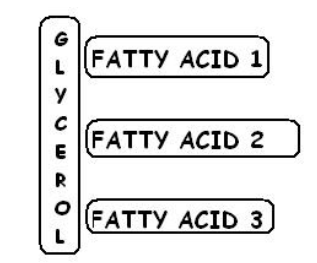
When fasting
Fasting simply means when you are not eating. Compared to when eating and you are 'fasted' then more free fatty acids (FFA) goes to tissues like muscle and more also goes to liver and produces a higher production of ketones. This also means you see a higher VLDL (very low density lipoproteins) output.
What are the lipoproteins?
You need a 'shell' to encase fats / lipids, the shell is called a lipoprotein because it is a combination of lipid and protein. The body needs a way to transport fat and fatty substances around the body because fat and water don't mix so you can't simply allow fat to enter the bloodstream without a container that likes water. The bloodstream is typically an aqueous solution (water-like).
This molecule likes water on the outside but the inside is filled with fat.
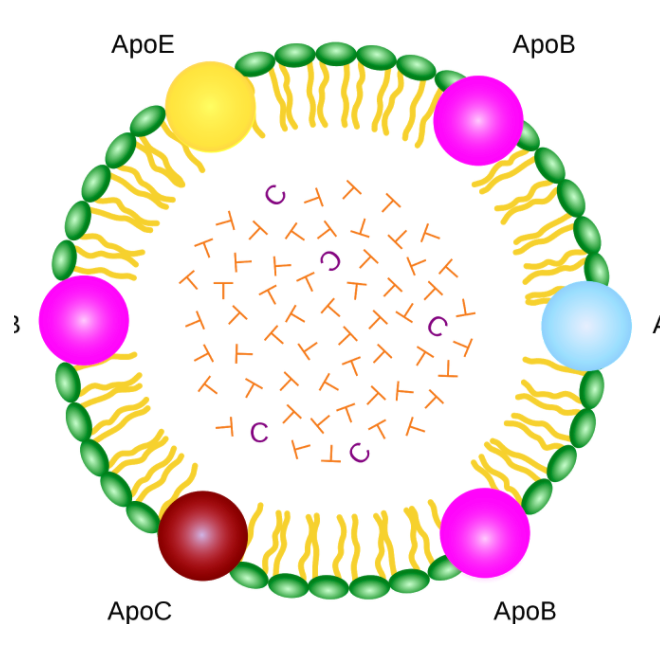
Fat-based-cored cells only need a monolayer (as shown above)
Water-based-cored cells have a phospholipid bilayer (below)
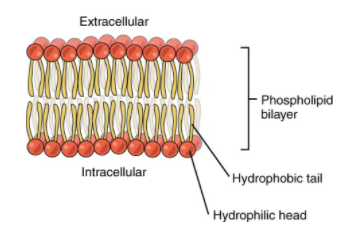
The lipoprotein system of molecules is designed to do the following things
Lipoprotein is the 'container' that transports nutrients
Vitamins A, D, E and K are fat soluble vitamins they get transported around the body.
Transports triglycerides which are used for energy
Transports phospholipids which are your building blocks for cell membranes
Transports cholesterol
Transport of certain proteins
The liver is the starting place for all this to happen. There are many factors that influence the production of lipoproteins. For example, under eating conditions and with the influence of insulin the liver makes makes VLDL (very low density lipoproteins)
VLDL is relatively speaking a BIG molecule.
When you're eating the liver receives the nutrients and places all the elements in the 'container' we call VLDL. It places in this spherical container the following 'cargo.' vitamins, proteins, triglycerides and cholesterol.
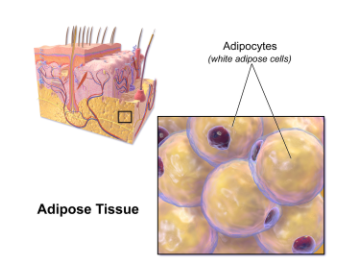
Primarily the fat cells is the destination.
There is a protein on the outside of the 'container' which is the address of where it's got to stop. The liver has punched it into the 'protein sat-nav' and said 'go to the fat cells'
So these particular proteins are in the wall of the VLDL.
WHEN it sees a fat cell it will bond with it.
This bonding will in general release a little bit of triglyceride into the bloodstream.
They are called non-esterified fatty acids (Non-esterified fatty acids (NEFA) are molecules released from triglycerides by the action of the enzyme lipase and are transported in the blood bound to albumin. They contribute only a small proportion of the body's fat; however provide a large part of the body's energy).
They get absorbed all over the body by different tissues.
For example, your heart will obtain between 70% to 85% of its energy from those triglycerides.
Remember the remainder does go to some other organs and tissues. It is the majority of the VLDL content that gets into the fat cell for storage (mostly triglycerides and cholesterol)
The 'sat nav protein' is then removed and the receiving fat cell changes the 'protein sat nav' in the shell of the lipoprotein to a different location and by now the container is smaller and we call it an IDL (intermediate density lipoprotein) as it's now a smaller molecule. Not all becomes IDL as some others becomes LDL (Low density lipoprotein)
HOW DOES IT GET SMALLER?
The monolayer of phospholipids sees some break away and they go into the bloodstream. Most though go into making the receiving cells membrane larger! WOW, clever.
This 'docking' has a two-fold function. It is FILLING UP THE CELL WHILE INCREASING ITS CONTAINER TOO!
LDL size variation
LDL size varies dependent on the insulin status of your body.
Small particles of LDL are small and dense usually if insulin is high.
If insulin is low the body is more likely to be breaking fat down and more of this breakdown is put into the LDL and it becomes a big fluffy molecule. Therefore you have two types of LDL
SMALL DENSE LDL
OR
BIG FLUFFY LDL, which goes to all the cells in your body, including your brain, MOSTLY for energy, some for repair.
This is best when fat adapted as you use triglycerides and ketones together.
HDL (High density lipoprotein)
Not many people mention that there is variation in size of HDL. HDL plays a role in clearing up the body. For example, LDL eventually hooks up with HDL. The small LDL is in the bloodstream and combines with HDL (high density lipoprotein) the HDL transfers cholesterol mainly into the small LDL and the HDL adds a protein 'sat nav' telling it to go back to the liver.
For those that interested in the variation in size of the HDL please look at the formation of HDL1, HDL2, HDL 3 and HDL4 source material
https://pubmed.ncbi.nlm.nih.gov/212757/
(this paper is also handy for demonstrating the importance of lipoprotein lipase 'LPL', it is an in-vitro study)
Adipose tissue LPL activity is high in fed animals and low when fasted. In skeletal and heart muscles it is the reverse. Low in the fed state and high in the fasted. Anyway back to the story...
HDL is a scavenger molecule that has been acting throughout the body collecting cholesterol and lipids that have been trapped in blood vessels where it's been performing a repair function.
The small LDL gets back to liver where it's either reprocessed back into VLDL or it dumps the extra cholesterol into bile and you poop it out.
When insulin level is low the liver produces a lot of these HDL molecules.
Small dense LDL can be looking to hook up with HDL but also has a protein 'sat nav' to an activated macrophage (part of your immune system)
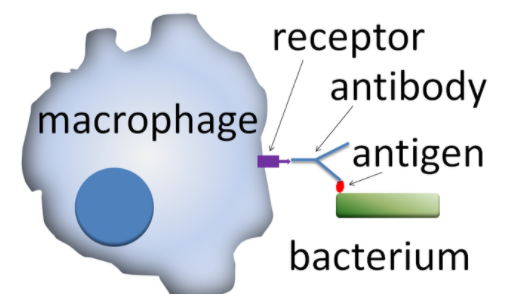
Macrophages get trapped in blood clots in your blood vessels. So when there is an injury in your blood vessel you get this clotting cascade (fibrous clots, platelets, neutrophils, white blood cells and macrophages)
The macrophages have proteins that are looking out for these LDL because the contents are used to smooth out blood clots.
So injuries to the cell wall from things like high blood sugar have a continued dumping of LDL contents to try and repair the damage.
Let's say the endothelial cells are repaired, there is still a little clot that has to be removed. Plasminogen breaks the clot down with assistance from antithrombin but the lipid still has to be picked up so HDL stops by and sucks up the cholesterol and the fat and goes back towards the liver, combining with LDL on its way and then it's back to the liver.
Bile
Not only does some bile end up in your poop but it also can head to the gut and when you eat a fatty meal the gall bladder squeezes bile into the gut, bile contains micelles (like little soap bubbles) which contains cholesterol and fat and these small little bubbles absorb fat from the food and the micelles get absorbed by the small intestine and dumped into the lymphatic system and we call that molecule a chylomicron.
They go to the tissues all over the body and any remnants go back to the liver
LDL on a low-carb diet
Dr. Nadir Ali is an interventional cardiologist with over 25 years of experience. He is also the chairman of the Department of Cardiology at Clear Lake Regional Medical Center. Before working as a cardiologist, he served as an assistant professor of medicine for eight years at Baylor College of Medicine in Houston, where he also received his medical training. Dr. Ali has championed many aspects of the science and practice of a low-carb lifestyle in the local Clear Lake area since 2013. He organises a monthly nutritional seminar in the Searcy Auditorium of the Clear Lake Hospital that receives more than 100 visitors every month from the local community. Dr Ali’s focus is on managing heart disease, obesity, metabolic syndrome and diabetes.
FAT STORAGE
Is like golfballs in a net bag. If you could not open the bag you'd need to break the golf balls down into smaller bits to get them out. The fat cell is packed with amongst other things, a great deal of triglyceride. These have to broken down to leave the fat cell, you need an enzymatic lipase to do this.
Lipase
The heart is a major site of LPL synthesis and fatty acids provide over 70% of energy needs for the cardiac muscle.
Neither non-esterified fatty acids nor the compensatory increase in cardiac glucose metabolism can entirely replace fatty acids not provided by LPL in the heart.
doi:10.1152/ajpendo.90920.2008
https://journals.physiology.org/doi/full/10.1152/ajpendo.90920.2008
The heart seeks out fatty acids coming off LPL
In adipose tissue insulin increases the level of LPL mRNA

